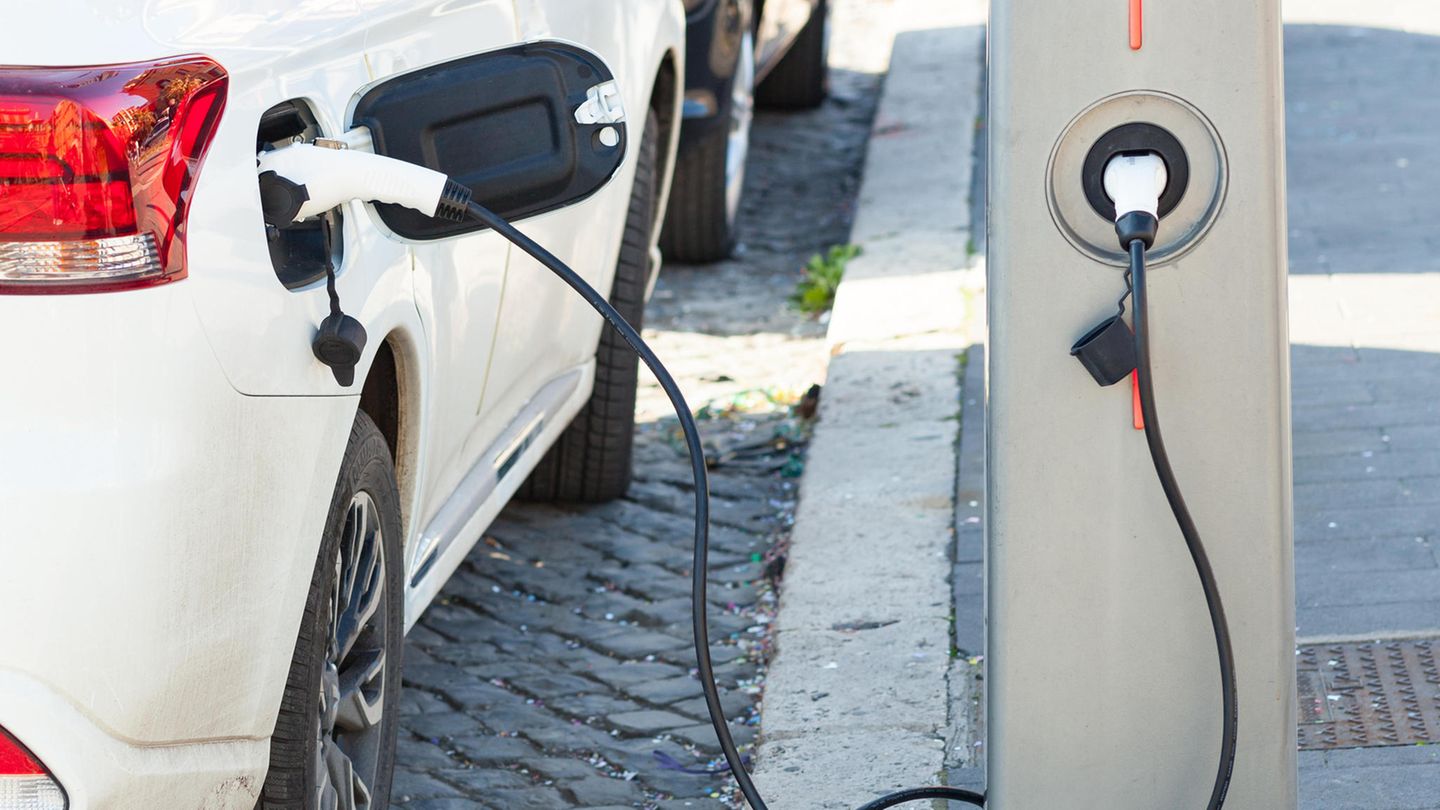The state electric car purchase bonus is to be extended until 2025, but customers of plug-in hybrid vehicles will soon no longer benefit from it. Automobile associations warn of the stricter rules and fear a slower traffic turnaround.
The auto industry has criticized the planned new requirements for plug-in hybrid vehicles for the purchase of electric cars. The Association of the Automotive Industry (VDA) and the Association of International Motor Vehicle Manufacturers (VDIK) warned that the ramp-up of electromobility could be slowed down in the short to medium term. Criticism also comes from the Naturschutzbund (Nabu).
E-car registrations increased significantly
A plug-in hybrid combines an electric drive with a combustion engine. According to a draft of the Federal Ministry of Economics, the regulation for plug-in hybrid vehicles is to be focused on the electric drive. With plug-in hybrids, either a CO2 criterion has to be met or a minimum range has to be given. From October 1, 2022, the CO2 criterion will no longer apply and the requirement of a purely electrical minimum range of 60 kilometers will apply, previously it was 40 kilometers. From January 1, 2024, according to the draft funding guidelines, plug-in hybrids must have a minimum range of 80 kilometers in order to be eligible.
The background to the new directive is that the significantly higher state e-car purchase premium is to be extended until the end of 2025. So far it is limited to the end of 2021. Last summer, the existing purchase premium (environmental bonus) was increased via an “innovation premium” – the federal government had doubled its funding for the purchase of an electric vehicle. Since then, new registrations of e-cars have risen sharply.
VDA President: New regulation slows traffic turnaround
VDA President Hildegard Müller said that the association generally welcomes the extension of the innovation bonus. “But the planned elimination of the CO2 criterion will slow down the ramp-up of electromobility in the short to medium term. A large number of previously funded plug-in hybrids will be less attractive for customers. They may then opt for a vehicle with a classic drive, and that can be political not be wanted. ” The technical challenge of increasing the minimum range to 80 kilometers can be solved in the medium term for the automotive industry. “But here too, industry needs planning security, so we demand that the deadline of early 2025 be left here.”
VDIK President Reinhard Zirpel pointed out that according to the current status, this would mean that around 50 percent of the plug-in hybrids offered by VDIK members would no longer be eligible for funding. “This is the wrong signal, especially when the electromobility market is ramping up. Smaller and therefore cheaper vehicles are also affected by these stricter requirements.” In the first half of 2021, plug-in hybrids made up over 50 percent of newly registered vehicles with electric drives.
Nabu criticizes the promotion of hybrids
Nabu traffic expert Daniel Rieger called it “extremely problematic” that plug-in hybrids should continue to benefit from the funding. These vehicles are used in the commercial sector and are apparently only rarely driven electrically there. Accordingly, there was no real reduction in CO2. “On the contrary: Due to the weight of the additional motor and the battery, the consumption of these vehicles is sometimes even higher than that of comparable combustion engines,” said Rieger of the dpa.
“The fact that this technology should continue to receive tax incentives without proof of actual electrical mileage and thus also CO2 reduction is unacceptable,” said the Nabu representative. Only one more way had been found to “help the auto industry sell questionable models”. Such a measure also slows down the more rapid switch to purely electric cars: “The manufacturers would be well advised to concentrate fully on the development of purely electric drives instead of complaining about more stringent requirements.”

See in the video: How well does the Porsche Taycan drive in everyday life? Ten testers swap their combustion engine for an electric car. They record their experiences in a video diary.
I am a 24-year-old writer and journalist who has been working in the news industry for the past two years. I write primarily about market news, so if you’re looking for insights into what’s going on in the stock market or economic indicators, you’ve come to the right place. I also dabble in writing articles on lifestyle trends and pop culture news.




